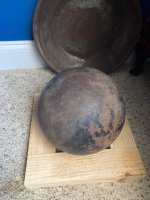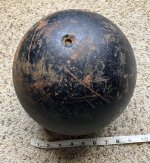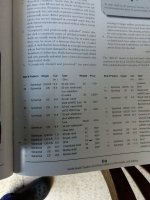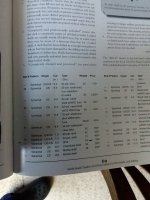Purchased this, I was told it was a cannon ball? Its 8" across and weighs 64 pounds, on my bathroom scale. Does have a small hole that only goes about 1/8 to 1/4" deep. Thought it to be a Civil War solid shot? Can use some help in identifying it? View attachment 2013600View attachment 2013600View attachment 2013665
Amazon Forum Fav 👍
Attachments
Last edited:










